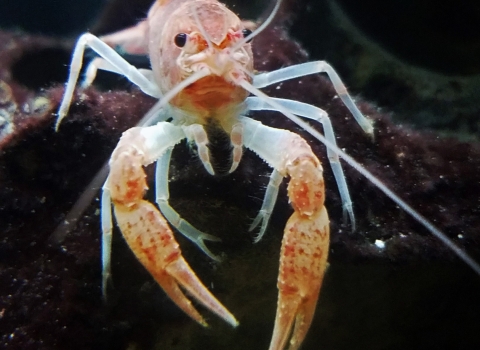The U.S. Fish and Wildlife Service announced today that it will designate approximately 13,970 acres of critical habitat within Colfax, Mora, Otero, Sandoval, and Socorro counties, in New Mexico; Las Animas, Archuleta, and La Plata counties, in Colorado; and Greenlee and Apache counties, in Arizona under the Endangered Species Act for the endangered New Mexico meadow jumping mouse. The designation will elicit Federal agencies’ assistance in the appropriate management of dense vegetation along 170 miles of streams that can support the mouse. The designation will become effective April 15.
“Critical habitat designation for the New Mexico meadow jumping mouse will ensure that sufficient, high quality riparian riparian
Definition of riparian habitat or riparian areas.
Learn more about riparian habitat is available for the species’ eventual recovery,” said Dr. Benjamin Tuggle, Regional Director of the Southwest Region. “This carefully determined designation identifies habitat most vital to the survival of the species.”
The jumping mouse has specialized habitat requirements, characterized by tall, dense herbaceous riparian vegetation composed primarily of sedges and forbs associated with perennial flowing water. It requires abundant food sources during the summer so it can accumulate sufficient fat reserves to survive their long hibernation period. In addition, individual jumping mice need intact upland areas adjacent to riparian wetland areas because this is where they build nests or use burrows to give birth to young in the summer and to hibernate over the winter.
Since 2005, 29 populations have been located within eight areas (two in Colorado, 15 in New Mexico, and 12 in Arizona). All of the remaining populations are small and isolated, and 11 of them have been substantially compromised since 2011 (due to water shortages, grazing, or wildfire and flooding). Areas designated as critical habitat for the New Mexico meadow jumping mouse include riparian corridors along rivers and streams, adjacent uplands, and areas that provide connectivity between and within populations.
The designation of critical habitat does not affect land ownership or establish a refuge, wilderness, reserve, preserve, or other conservation area conservation area
A conservation area or wildlife management area is a type of national wildlife refuge that consists primarily or entirely of conservation easements on private lands. These conservation easements support private landowner efforts to protect important habitat for fish and wildlife. There are 15 conservation areas and nine wildlife management areas in the National Wildlife Refuge System.
Learn more about conservation area . The critical habitat designation identifies areas that are important to the conservation of the New Mexico meadow jumping mouse. The critical habitat designation will require federal agencies to consult with the Service on any of their actions that may affect designated critical habitat. The Service can then U.S. Fish and Wildlife Service News Release Public Affairs Office PO Box 1306 Albuquerque, NM 87103 505/248-6911 505/248-6915 (Fax) recommend ways to minimize any adverse effects. It imposes no requirements on state or private actions on state or private lands where no federal funding, permits or approvals are required.
"Jumping mice rely on riparian areas and wet meadows on a working landscape,” said Tuggle. “In an era of climate change climate change
Climate change includes both global warming driven by human-induced emissions of greenhouse gases and the resulting large-scale shifts in weather patterns. Though there have been previous periods of climatic change, since the mid-20th century humans have had an unprecedented impact on Earth's climate system and caused change on a global scale.
Learn more about climate change , securing high quality surface water flows benefits jumping mouse habitat and those of us who recreate outdoors.”
The jumping mouse hibernates about eight or nine months out of the year and is only active three or four months during the summer. Within this short time frame, it must breed, birth and raise young, and store up sufficient fat reserves to survive the next year’s hibernation period. Jumping mice only live three years or less and have one small litter annually with seven or less young, so the species has limited capacity for high population growth rates due to this low fecundity. As a result, if resources are not available in a single season, jumping mice populations can be greatly stressed.
The U.S. Fish and Wildlife Service works with others to conserve, protect, and enhance fish, wildlife, plants, and their habitats for the continuing benefit of the American people.
Connect with our Facebook page at http://www.facebook.com/USFWSMountainPrairie, follow our tweets at http://twitter.com/USFWSMtnPrairie, watch our YouTube Channel at http://www.youtube.com/usfws and download photos from our Flickr page at http://www.flickr.com/photos/usfwsmtnprairie/.



